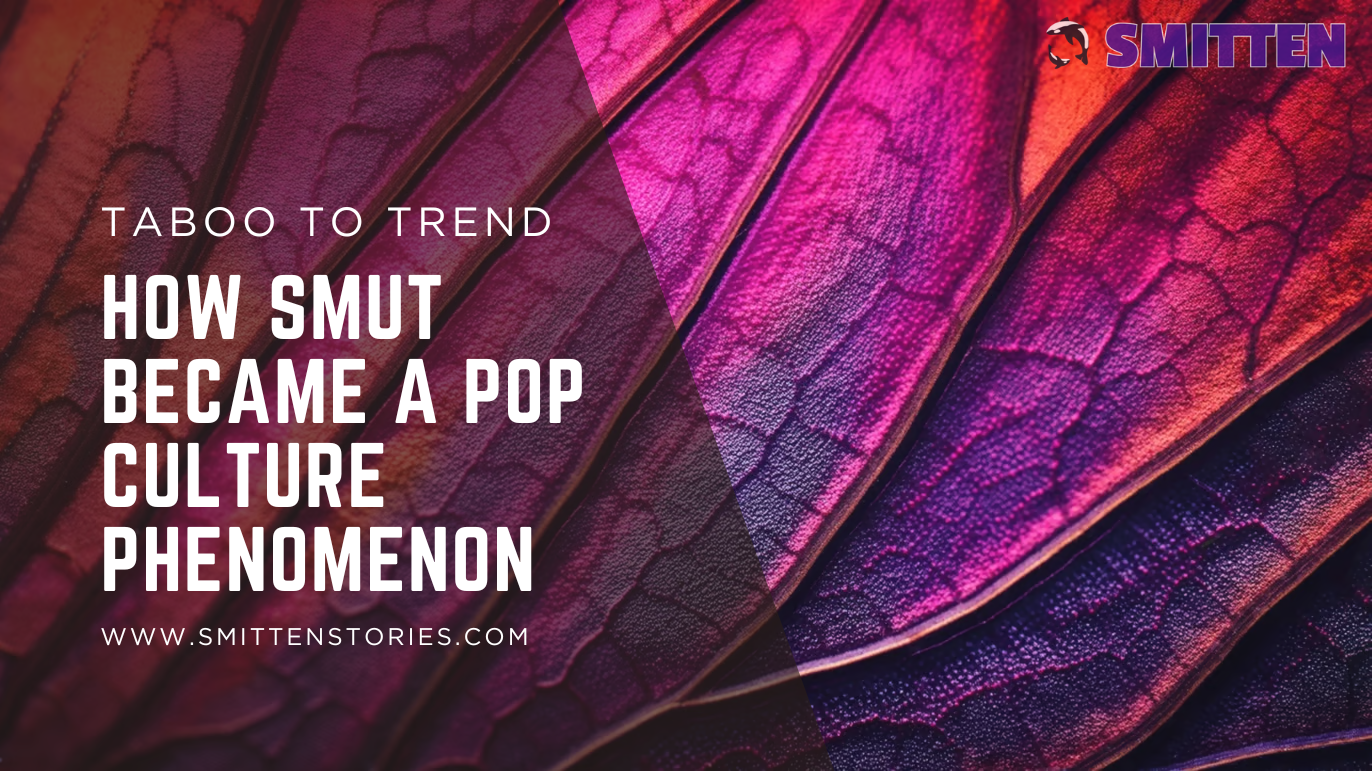Taboo to Trend: How Smut Became a Pop Culture Phenomenon

When did smut transform from guilty pleasure to pop culture staple? Sexy, naughty stories that used to be consumed behind closed doors are now everywhere—dominating bestseller lists, lighting up social media feeds, and reshaping the book industry. The phenomenon goes beyond spicy fiction; it signifies a broader cultural shift in how we view romance, desire, and self-expression.
The "romantasy" genre is flourishing, explicit content is more widely embraced, and what was once considered niche is now boldly mainstream.
So, how did smut go from taboo to trending? And what does this shift reveal about us? Let's dive in.
Memes Made Smut More Mainstream
Hawk Tuah Girl & The Internet's Obsession with Desire
The viral "Hawk Tuah" video shows society's growing comfort with open discussions about attraction and sexuality. Hailey Welch, the woman behind the phrase, delivered an off-the-cuff response during a street interview that quickly resonated with online audiences. When asked what she does in bed to make her man "go crazy," Welch confidently replied with the now-infamous phrase "Hawk Tuah," mimicking a guttural sound associated with explicit scenes.
The phrase itself references the act of spitting as a form of lubrication during oral sex, making her unapologetic delivery even more provocative and attention-grabbing. This raw and unfiltered moment showcases the power of memes and social media in normalizing explicit discussions and merging formerly taboo topics into everyday conversation. Just like how viral phrases gain widespread traction, smutty books have transitioned from a niche indulgence to a widely celebrated literary genre, embraced by digital communities eager to explore passion and romance.
Explicit Slang Became Everyday Speech
Once an explicit term used to refer to unprotected sex, "raw dogging" is now commonly used to describe enduring long flights without sleep aids or entertainment. This shift in language mirrors society's growing comfort with edgy terms.
Even major news outlets like the BBC have written about raw-dogging, prompting worldwide debates about how risqué language loses its shock factor through casual repetition. As language evolves, so does the public perception of racy topics—mirroring the rise of high-heat romance novels. With BookTok propelling smutty literature into the mainstream, themes once whispered about in private are now openly discussed, reshaping what's considered acceptable conversation.
Romantasy Supercharged Smut's Rise

The fusion of romance and fantasy—dubbed "romantasy"—has exploded in popularity, proving readers crave high-heat storytelling across genres. While erotic literature isn't new, this latest wave is pulling in fresh audiences by emphasizing female pleasure and empowerment. These books, often written by women for women, resonate with readers seeking narratives centered on female desire and self-discovery. Unlike traditional romance, romantasy intertwines intimacy with epic quests, magical politics, and high-stakes battles.
The success of novels like Fourth Wing—which blends dragon-riding with passionate romance—demonstrates that today's audiences want escapism and steam. As this genre thrives, it not only reshapes traditional fantasy but also cements the demand for unapologetically smutty storytelling in mainstream literature. Fantasy lovers want more than just sword fights and spells—they want desire and devotion, too. New apps like Tome are designed with this exact community in mind, allowing fantasy readers to share theories, fan art, memes, and reviews.
The Boom of Romance Bookstores & the Smut Revolution

The stigma surrounding romance novels has faded, with readers proudly embracing steamy literature. This movement has transformed romance from so-called "guilty pleasure" into a genre that dominates book sales. Traditional publishers have responded by prioritizing high-heat content to meet growing demand.
Romance sales surged during the pandemic as readers sought comfort in escapism. The genre's signature Happily Ever After (H.E.A.) endings offered a sense of stability. BookTok played a crucial role, as TikTok influencers spotlighted favorite authors, drawing in younger audiences and creating viral sensations. Once relegated to back shelves, romance novels dominate front displays, fueled by a passionate and expanding readership.
The Rise of Short-Form Smut
Bite-Sized Steamy Storytelling
Platforms like ReelShort have capitalized on the demand for fast-paced, erotic and romantasy storytelling. Short-form content—often featuring vampires, werewolves, and dark romance—has surged in popularity, reflecting the broader trend of instant, high-intensity entertainment.
According to Campaign Asia, women aged 25-44 comprise 70% of the short drama audience seeking quick, engaging escapes that fit into their busy lives. These bite-sized dramas offer the perfect balance of fantasy and romance, allowing viewers to indulge in passionate storytelling without committing to a full-length novel or series. Just as explicit language has become casual in daily speech, so has the consumption of quick, immersive romance content seamlessly woven into modern entertainment.
Smut Is Here to Stay—But What's Next?
From viral slang to the explosion of romantasy and the rise of digital storytelling, smut's dominance in pop culture is undeniable, owing to shifting societal norms and digital acceleration. Once hidden on back shelves, it dominates mainstream entertainment and proves that audiences crave passion, pleasure, and raw emotional intensity.
But as boundaries keep shifting, will pop culture embrace even bolder storytelling? One thing is clear—smut isn't fading anytime soon. It's turning up the heat on entertainment.
Love reading steamy stories? Why not write your own? Smitten is home to the hottest tales, and your next story could be one of them. Write yours here.